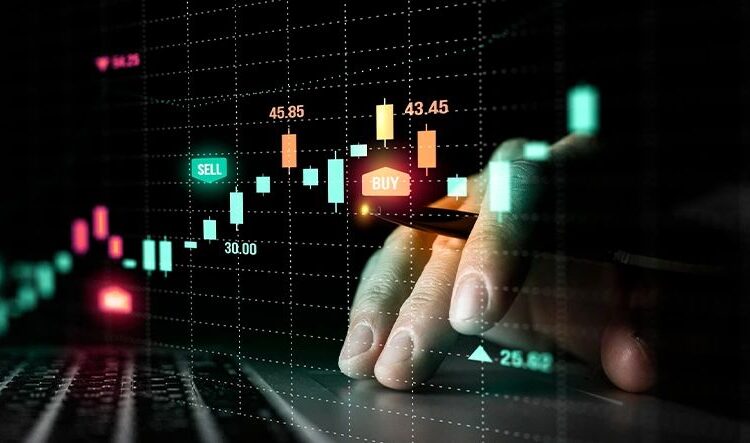Mobile trading has become an essential feature of the modern forex market. As more users seek direct access to global financial markets through smartphones and tablets, brokers have adapted their services to meet this demand. Today, most trading activity does not require a desktop terminal, and executing a position, monitoring charts, or adjusting risk settings can be done entirely from a mobile interface.
This article outlines the core features that mobile traders can expect when using broker-provided apps. It also explores functionality, execution reliability, and considerations for those using mobile devices as their primary access point to the market.
Overview of Mobile Trading Capabilities
Mobile trading applications serve as complete platforms, offering a range of tools that allow users to participate in the market from anywhere. These applications typically provide:
- Live price feeds across currency pairs and other asset classes
- Technical indicators and charting options
- Order management features (market, limit, stop)
- Trading history and account summary
- Push notifications for account activity or price alerts
Traders using Android or iOS can usually find the app through official marketplaces, including those that offer integration with third-party terminals. Users seeking access to charting tools and order types often compare features before deciding to install platforms that resemble mt4 apk for android, but many brokers offer in-house alternatives.
Execution and stability
Execution speed is a primary concern when trading from a mobile device. The best forex brokers prioritize fast and accurate order processing, regardless of platform. On mobile, execution depends on several factors:
- Server response time
- Network strength (Wi-Fi or mobile data)
- Application efficiency
To reduce slippage and delayed orders, mobile applications must synchronize in real time with broker infrastructure. This includes accurate reflection of current spreads, swap rates, and margin levels. Traders expect mobile platforms to offer performance equivalent to desktop terminals during all active sessions.
Technical analysis tools
Many traders rely on chart patterns, indicators, and oscillators when making decisions. Mobile applications now support a wide range of analytical tools, including:
- Moving averages (SMA, EMA)
- RSI, MACD, and stochastic indicators
- Bollinger bands and Fibonacci retracements
- Multiple time frame charts, including M1 to MN
These tools, once limited to desktop platforms, are now accessible through smartphones and tablets. Users can draw trendlines, identify support and resistance levels, and switch between chart types (candlestick, line, bar) with minimal delay. The inclusion of these functions reflects how mobile trading has developed into a complete analysis environment.
Risk management features
Managing risk from a mobile device requires responsive tools that allow for quick adjustment of orders. Key features available through broker apps include:
- Stop-loss and take-profit settings during order placement
- Real-time margin monitoring
- Equity and balance tracking
- Account protection settings, including negative balance protection (if offered)
Because market conditions can change rapidly, mobile platforms allow traders to modify or close orders with a few taps. This responsiveness is essential during periods of increased volatility or major economic news.
Account and market access
Forex brokers often provide access to additional asset classes beyond currency pairs. From a mobile platform, users may find:
- Major, minor, and exotic forex pairs
- Commodities, including instruments used in gold trading and oil trading
- Indices and synthetic assets
- Spot and derivative products
The structure of the mobile app determines how these instruments are categorized and displayed. Navigation menus typically allow traders to create a list of favorites, organize by asset type, or view based on market session activity.
Alerts and notifications
Mobile trading applications allow users to stay informed through push notifications and custom alerts. These can include:
- Price level alerts
- Order fill confirmations
- Margin warnings
- Platform or market news
The ability to receive and act on alerts in real time helps maintain awareness without needing constant screen time. Traders who rely on price thresholds or time-sensitive execution use these features to monitor opportunities and risks throughout the day.
Data security and login options
Security remains a central concern in mobile trading. Applications typically include the following measures:
- Two-factor authentication (2FA)
- Biometric login (face or fingerprint recognition)
- Session timeout and auto-lock settings
- Encrypted transmission of data
These features protect user information and reduce the risk of unauthorized access. Traders logging in from shared or public networks should apply additional precautions and confirm that the broker uses industry-standard encryption protocols.
Summary Table: Key features in Mobile Forex Trading
| Feature Category | Common Inclusions |
| Trading tools | Live pricing, instant orders, pending orders |
| Technical analysis | Indicators, charting, timeframes |
| Risk management | Stop-loss, take-profit, margin tracking |
| Asset access | Forex pairs, commodities, indices |
| Notifications | Price alerts, execution messages, margin warnings |
| Platform security | 2FA, biometrics, session controls |
| Platform performance | Fast execution, real-time syncing, minimal app crashes |
Final considerations
Mobile trading offers direct, practical access to the market with a feature set that matches most desktop environments. Traders today can analyze the market, execute positions, and manage their exposure using smartphone applications developed by brokers. While platforms differ in layout and speed, most now include tools previously available only in full desktop terminals.
The best mobile platforms provide stable access during all trading sessions and support multi-asset trading, including forex and products such as those used in gold trading and oil trading. Traders who use mobile apps as their primary interface should still understand platform limitations, test execution reliability, and maintain secure login practices.
Although mobile trading is convenient, it should be used with the same level of discipline and planning as desktop trading. Fast execution and remote access are useful, but success still depends on the trader’s approach, risk management, and strategy consistency.

